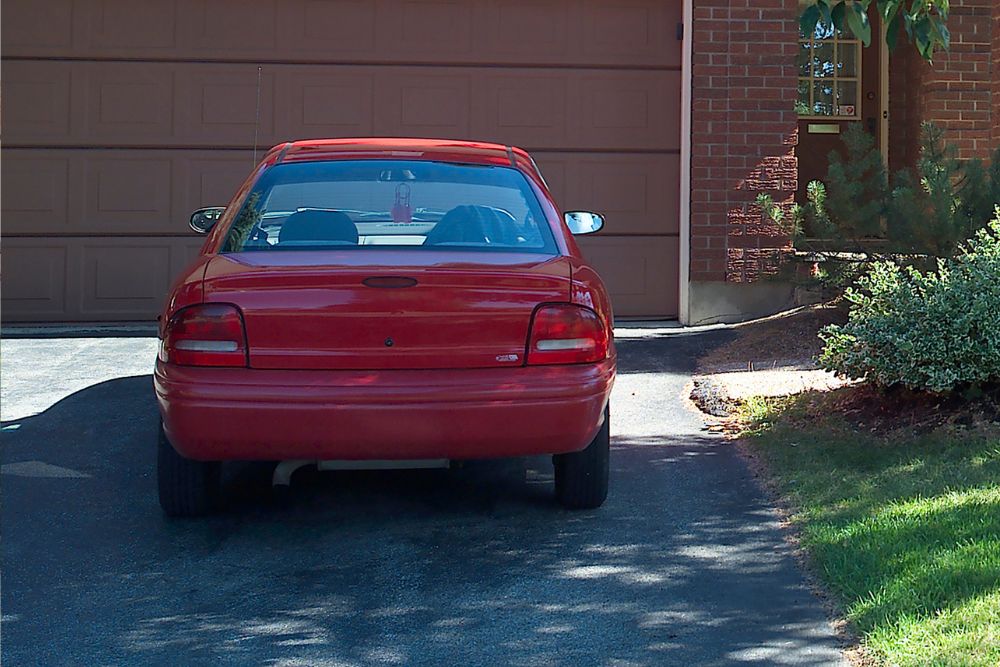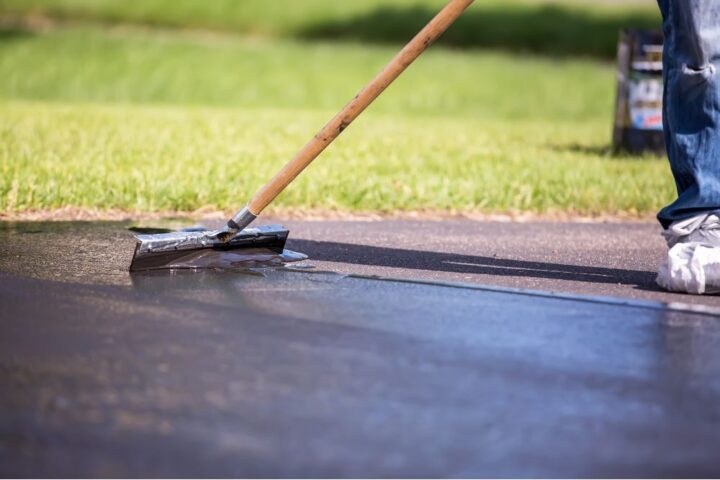In Australia, it’s vital to conform to exact standards when building a concrete driveway. These rules focus on aspects like the slab’s thickness, the driveway’s slope, and alignment with local council specifications and the National Construction Code.
For private driveways, a typical size is 3m wide and 2m long, with thicker driveways needed for commercial properties. The optimum depth falls between 100mm and 125mm, with variations depending on the weight of the vehicle.
To prevent surface damage, make sure there is efficient drainage and slope. By adhering to these guidelines, your driveway will endure longer and safely bear heavy use.
In this blog post we will go into the details you need to know regarding Australian standards for concrete driveways.
Australia Driveway Standards: An Overview
Understanding the standards for driveways is vital to ensure their durability and longevity. These standards, established in Australia, aren’t arbitrary rules – they’re designed with your safety in mind. Adhering to Australian Standards and local council requirements is essential to avoid any safety risks.
Constructing a driveway is more than just laying concrete. It requires proper construction techniques to avoid structural failures that could lead to expensive repairs in the future. You certainly wouldn’t want to be surprised by sudden problems with your driveway, would you? That’s why it’s important to make sure your driveway is built to last and withstand frequent use.
In Australia, the inspection criteria for driveways focus on aspects such as thickness, cracking, and drainage. These aspects aren’t merely for appearance – they directly affect the compliance and robustness of your driveway. A thick, well-drained driveway is less prone to cracking under pressure, while good drainage prevents water accumulation that could weaken the structure of your driveway over time.
Concrete Slab Casting Process
The process of casting a concrete slab is an essential part of building driveways in Australia.
We’ll cover the initial preparations, the specific materials required and their ratios, and the casting and hardening phases.
Every stage is vital to create a sturdy and standard-compliant driveway.
Preparing for Slab Casting
Before embarking on the process of concrete slab casting, it’s essential to correctly prepare the ground. This involves eradicating vegetation, levelling the area, and building a sand tray. These steps are vital for ensuring your slab is robust, steadfast, and enduring.
Subsequently, you’ll need to insert service penetrations and compact the soil. This guarantees a firm foundation for the slab, reducing the chance of subsidence or fracture.
Here are some important points to bear in mind:
- Lay a membrane with precision. This is to stop moisture from infiltrating the concrete.
- Put in a termite barrier. This is particularly crucial in Australia, where termites can pose a significant issue.
- Accurately pour the concrete, ensuring a link to the drain and complying with Australian Standards for structural strength and longevity.
Materials and Mixture Proportions
Understanding the concrete slab casting process is vital, particularly the need for top-quality materials and correct mixture proportions. First, prepare the ground properly. This involves removing vegetation and ensuring the area is level. It’s also crucial to construct a sand pan before casting.
Different slab types need specific thicknesses, so it’s important to know what’s required for the slab you’ve chosen. The Australian Standards AS 2870 and AS 3600 provide the correct specifications and thicknesses for concrete slabs. Following these standards will make sure your slab is durable and stable.
Casting and Curing Process
Turning our focus from the materials and mixture proportions, it’s essential to note that the casting and curing process of concrete slabs is equally vital. This procedure encompasses several steps, from readying the ground to linking the drainage. The slab’s thickness is key and varies based on the slab type.
- One-way slabs require 130mm in the middle and 140mm in column strips.
- Flat slabs need to be at least 125mm thick, fit for spans of 6-9 metres.
- Grid or waffle slabs range from 75-130mm, suitable for spans of 9-25 metres.
Various Concrete Slab Thicknesses
When it comes to the thickness of concrete slabs for driveways, it’s crucial to know that it can vary from 100mm to 150mm, contingent on the weight of the vehicle it has to support. For example, some city councils stipulate a minimum thickness of 125mm for residential driveways. This standard is put in place to ensure that the driveway can safely bear the weight of regular household vehicles.
In addition to thickness, it’s also vital to think about the role of steel reinforcement. This isn’t for load capacity but for controlling cracks. By incorporating steel reinforcement, you’re providing your driveway with a better opportunity to withstand the test of time without cracking.
Construction techniques are also a factor. You must use appropriate methods to prevent structural failures. Keep in mind, a thicker slab won’t make up for substandard construction techniques.
Driveway Thickness Necessities
The correct thickness of your driveway is crucial to make sure your driveway can withstand daily wear and tear.
Driveways that are only 100mm thick can be easily damaged by heavy vehicles, underscoring the importance of sticking to the thickness guidelines.
But it’s not just about the thickness, it’s also about the way you build your driveway. The right construction methods are key to avoid structural breakdown and ensure your driveway lasts.
You might be asking what happens if you don’t meet these standards. Here are three potential outcomes:
- Driveways that don’t meet the requirements can lead to structural problems
- They present safety risks
- They can result in expensive repairs
It’s also worth noting that it’s not just about steel reinforcement. While it helps to control cracks, it doesn’t necessarily increase load-bearing capacity. Therefore, remember, when it comes to driveway thickness, it’s best to adhere to the standards and rules set out by Australian authorities.
Importance of Suitable Grading
Let’s delve into the significance of appropriate grading, a crucial aspect in upholding the durability and lifespan of your concrete driveway. Proper grading is vital and can’t be disregarded. It facilitates effective water drainage by guiding rainwater away from your house and towards drainage points. This inhibits water accumulation, a primary cause of driveway deterioration.
A uniform gradient along the length of your driveway is essential. It’s not merely about guiding water, but about how uniformly and efficiently it’s accomplished. A well-graded driveway won’t have water assembling in spots, safeguarding the surface from possible water harm.
But it’s not just about damage prevention. Appropriate grading also enhances driveway safety. Accumulated water can lead to slippery surfaces or ice formation in colder climates. By effectively managing water runoff, you’re generating a safer environment for both vehicles and pedestrians.
Ideal Concrete Slab Depth
The recommended depth for your driveway’s concrete slab is usually between 100mm and 125mm. This depth is crucial for the driveway’s durability, its capacity to carry weight, and its lifespan. Stick to these guidelines to prevent problems like cracking, sinking, or even structural failure in your driveway.
Bear in mind, though, that the perfect slab depth isn’t a universal solution. It can be influenced by things like soil stability, the weight of vehicles expected to use the driveway, and rules set by your local council. For example, if you expect your driveway to support heavier vehicles, you may need a deeper slab, possibly up to 150mm.
Also, depending on the stability of the soil beneath your driveway, you might need to alter the slab depth. Certain types of soil may need a deeper slab to guarantee stability.
In Australia, local council rules often determine the minimum and maximum slab depths for driveways. So, it’s vital to check with your local council before you lay your driveway slab.
In short, while 100mm to 125mm is a good starting point, the perfect concrete slab depth for your driveway depends on a variety of factors. You need to consider these to make sure your driveway lasts.
Kerb Requirements for Driveways
Incorporating kerbs or gutters into your driveway design not only enhances its longevity but also strengthens its resistance to severe weather conditions. These vital parts of your driveway design considerably contribute to its robustness, utility, and simplicity of upkeep.
Right positioning of kerbs or gutters is vital as it effectively handles water runoff and prevents potential harm to your driveway. Their function is to direct water away from the driveway surface, avoiding any puddling that could lead to erosion or other problems over time.
The advantages of incorporating kerbs into your driveway design are plentiful:
- Water Management: They divert water away from your driveway, preventing puddling and possible erosion.
- Longevity: Kerbs can safeguard the edges of your driveway, extending its life and maintaining its condition.
- Utility: They contribute to the overall utility and simplicity of maintenance of your driveway, saving you both time and money in the long term.
Influence of Vehicle Weight
When designing concrete driveways, it’s essential to take into account the weight of vehicles as this considerably affects the driveway’s durability and lifespan. For regular cars, it’s advised to maintain a minimum thickness of 125mm for the driveway. This thickness is sufficient to support the weight of lighter vehicles without inflicting notable damage.
However, when it comes to heavier vehicles, extra caution is needed. A driveway thickness of 100mm simply won’t hold up under the weight of vehicles exceeding 3 tonnes.
For vehicles weighing between 3 and 10 tonnes, it’s recommended to increase the driveway thickness to 150mm. This will avert any structural damage and guarantee your driveway’s longevity.
Bear in mind, steel reinforcement in your driveway is intended for crack control, not load capacity. So, don’t assume that merely adding steel reinforcement will make your driveway sturdy enough for heavy vehicles. Correct construction and following regulations are paramount.
Always adhere to local council standards and Australian regulations when building your driveway. These guidelines ensure the safety and durability of your driveway, no matter the weight of the vehicles it will accommodate.
Conclusion
In Australia, it’s essential to grasp the standards for driveways. This includes the variety of driveways, the process of casting the slab, required thickness, and the importance of building inspectors.
The optimal slab depth and kerb criteria are also key, and are determined by the weight of the vehicle. By making sure your driveway complies with these standards, you can be confident it will be long-lasting, safe, and enhance the value of your property.
Therefore, don’t neglect these standards when planning your future concrete driveway project.




